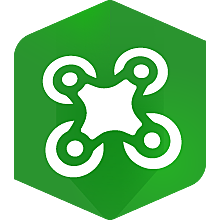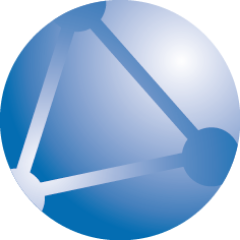Top Drone Analytics Softwares
Drone Analytics software enables users to collect, analyze, and interpret aerial data captured by drones. This software is essential for industries such as agriculture, construction, mining, and real estate, providing valuable insights into areas that are otherwise hard to reach. By leveraging data processing and visualization tools, Drone Analytics software can transform raw aerial images into ac... Read More
16 companies found
DroneDeploy
Product Description
DroneDeploy is a user-friendly software designed to help businesses easily capture aerial data with drones. By putting the power of drone technology into your hands, DroneDeploy allows you to efficiently plan, capture, and analyze aerial images and data. Whether you're working in construction, agriculture, or any other industry requiring precise aerial data, this software simplifies the process. ... Read More
Users
- • No Data
Industries
- • No Data
Market Segment
- • No Data
Product Description
Kespry is a software solution that helps businesses make better use of aerial data for their operations. This cloud-based service is designed to streamline tasks like drone flight planning, data collection, and analysis. Kespry makes it easier for companies in sectors such as construction, mining, and insurance to gather, process, and understand the information they need without the hassle of manu... Read More
Users
- • No Data
Industries
- • No Data
Market Segment
- • No Data
Product Description
HUVR is a software solution designed to simplify and streamline your business operations by offering a comprehensive platform for managing your company’s data and processes. At its core, HUVR focuses on helping companies collect, analyze, and utilize data efficiently. It is particularly beneficial for industries like energy, manufacturing, and utilities, where data collection and management are cr... Read More
Users
- • No Data
Industries
- • No Data
Market Segment
- • No Data
Product Description
Sensat is all about helping businesses and organizations manage their data in a more efficient and meaningful way. By transforming complex infrastructure and engineering information into easy-to-understand visuals, Sensat makes it simpler for teams to see the bigger picture. Whether you’re working on construction projects, urban planning, or infrastructure management, Sensat’s platform gives you t... Read More
Users
- • No Data
Industries
- • No Data
Market Segment
- • No Data
Product Description
Scopito is a dynamic software solution designed specifically for managing and analyzing inspection data. At its core, this platform helps companies keep track of their infrastructure by simplifying the inspection process, making it easier and more efficient to collect, view, and manage inspection data. Whether you’re responsible for maintaining power lines, wind turbines, solar panels, or other cr... Read More
Users
- • No Data
Industries
- • No Data
Market Segment
- • No Data
Product Description
FlyFreely is designed to make managing your drone operations easier and more efficient. Whether you're a small business using drones for simple tasks or a larger company with complex needs, FlyFreely streamlines the process from start to finish. Our software automates flight planning, ensuring you comply with regulations and safety guidelines effortlessly. This means you spend less time worrying ... Read More
Users
- • No Data
Industries
- • No Data
Market Segment
- • No Data
Product Description
Mapware is designed to streamline how organizations handle mapping and spatial data needs. Imagine having an easy-to-use platform that takes the headache out of creating and managing maps, without requiring specialized skills or technical know-how. At its core, Mapware helps businesses visualize and analyze their geographical information. Whether you’re working in agriculture, construction, marke... Read More
Users
- • No Data
Industries
- • No Data
Market Segment
- • No Data
ArcGIS Drone2Map
Product Description
ArcGIS Drone2Map is a user-friendly software that helps turn drone-captured imagery into valuable insights. This software is designed for everyone from beginners to professionals who need to make sense of aerial data quickly and effectively. Whether you're in agriculture, construction, or environmental conservation, it simplifies the process of creating high-quality maps and 3D models from drone p... Read More
Users
- • No Data
Industries
- • No Data
Market Segment
- • No Data
Delta Drone
Product Description
Delta Drone provides an innovative, user-friendly software platform designed to simplify and enhance the process of drone operations for businesses of all sizes. Our software offers an intuitive, straightforward interface that allows users to easily plan, execute, and manage their drone missions. With Delta Drone, companies can take advantage of high-quality aerial data to improve operations witho... Read More
Users
- • No Data
Industries
- • No Data
Market Segment
- • No Data
Skyward.io
Product Description
Skyward.io is designed to make managing your organization's operations smoother and more intuitive. Our software is tailored for companies looking to streamline their processes and enhance overall productivity. We understand that running a business comes with a multitude of tasks, from handling customer relationships to tracking projects and managing your team. That's why we have focused on creati... Read More
Users
- • No Data
Industries
- • No Data
Market Segment
- • No Data
What is Drone Analytics software and how does it work?
Drone Analytics software is a tool designed to process data collected from drones to provide insightful analytics and visualizations. This software plays a crucial role in various industries by transforming raw aerial data into actionable insights. The process begins when drones equipped with cameras or sensors collect data over a defined area. Once the data collection is complete, it is uploaded to the Drone Analytics software for analysis.
Data Collection
Drones collect a variety of data types depending on their payload and the software requirements. This includes high-resolution images, videos, LiDAR data, thermal readings, and multispectral imagery. These data types are used in different scenarios, ranging from agriculture to infrastructure inspection.
Data Processing
After collection, the raw data is imported into the Drone Analytics software. The software processes the raw input using various algorithms. These may include computer vision, machine learning, and pattern recognition algorithms. Processing converts complex data sets into a manageable format that can be easily analyzed.
Analysis and Interpretation
The core function of Drone Analytics software is the analysis and interpretation of data. The software is capable of creating maps, 3D models, and various reports. These outputs help in understanding the physical and structural aspects of the surveyed area. In agriculture, analytics might reveal crop health insights or soil condition assessments. For construction and mining, it can involve volume measurements and site inspections.
Visualization
Visualization is an essential component of Drone Analytics software. It allows users to view data in a meaningful way, employing detailed maps, charts, graphs, and 3D models. This visual representation aids in communicating information clearly and effectively, helping decision-makers take informed actions based on data insights.
Integration and Deployment
Drone Analytics software often integrates with other enterprise systems. This integration facilitates better data management and reporting workflows. Deployment can occur via cloud-based platforms, enabling scalability, data storage, and collaboration among teams, or through on-premise setups suitable for secure environments or where cloud use is limited.
Data Storage and Management
Data management is vital, given the large volumes of data drones can capture. The software allows for efficient data storage and retrieval. Classification and tagging of data within the software ensure that users can access information easily when needed.
Real-time Analytics
Many Drone Analytics platforms offer real-time data processing capabilities. This feature allows users to gain instantaneous insights as data is being captured. Real-time analytics can be particularly useful in dynamic scenarios such as search and rescue operations or live monitoring.
By leveraging Drone Analytics software, industries can derive significant value from aerial data, leading to improved operational efficiency, reduced costs, and enhanced decision-making.
How can Drone Analytics software improve business operations?
Enhanced Data Collection
Drone Analytics software significantly enhances data collection capabilities for businesses. Utilizing drones equipped with advanced sensors and cameras allows companies to gather comprehensive data over large areas swiftly and accurately. This aerial perspective provides insights that are difficult to obtain from ground-level assessments. Sectors such as agriculture, construction, and mining benefit greatly by monitoring assets, tracking progress, and identifying issues without physical intrusion or disruption, thereby optimizing operational efficiency.
Real-time Analysis and Decision Making
The integration of Drone Analytics software allows for real-time data analysis, enabling swift decision-making processes. By analyzing aerial data on-the-fly, businesses can make informed decisions promptly. Real-time monitoring and analysis help in identifying potential problems before they escalate, ensuring proactive management of operations. This timely intervention is crucial in sectors like emergency services or logistics, where decisions need to be immediate and informed.
Cost Reduction
Implementing Drone Analytics software can lead to significant cost reductions for businesses. Traditional data collection methods often require substantial labor and equipment, which are both time-consuming and costly. Drones, meanwhile, operate at a fraction of the cost and time, delivering high-quality data. By minimizing the need for manual data collection and reducing operational delays, companies can allocate resources more effectively and reduce overhead costs associated with traditional methods.
Improved Safety Measures
Incorporating Drone Analytics software enhances safety measures within business operations. Drones can access hazardous or hard-to-reach areas without risking human safety. In industries such as construction or oil and gas, where dangerous environments are common, drones perform inspections and monitor safety compliance with precision. This prevention of manual intervention in risky zones vastly reduces potential workplace injuries, thereby keeping employees safe and operational hazards minimized.
Enhanced Accuracy and Precision
Drone Analytics software offers unparalleled accuracy and precision in data collection and analysis. Equipped with high-resolution cameras and sensors, drones capture detailed data that translates into precise analytics. This accuracy ensures high-quality outputs and insights, allowing businesses to optimize their operations efficiently. Industries such as agriculture benefit from precision agriculture practices, optimizing crop production through accurate data-driven decisions.
Scalability and Flexibility
The scalability and flexibility offered by Drone Analytics software allow businesses to expand operations with ease. As business needs grow, the software can adapt to collect and analyze larger datasets without compromising on quality or speed. This scalability is particularly beneficial for industries undergoing rapid growth or seasonal fluctuations, ensuring that data management adapts seamlessly with changing demands.
Enhanced Collaboration and Accessibility
Drone Analytics software facilitates enhanced collaboration across teams by providing accessible and shareable data. The ability to share real-time insights and findings with various stakeholders enhances communication and teamwork, leading to more cohesive operational efforts. Businesses can integrate data findings into collaborative tools or platforms, ensuring that every team member stays informed and contributes to a unified operational strategy.
By adopting Drone Analytics software, businesses can transform their operations, leading to increased efficiency, cost savings, and improved safety. These improvements fundamentally change how businesses operate, enabling them to stay competitive and agile in fast-paced industry environments.
What industries benefit the most from using Drone Analytics software?
Agriculture
Agriculture is increasingly benefiting from Drone Analytics software by providing precision in crop monitoring. Farmers can analyze aerial data to assess crop health, optimize irrigation, and detect pest infestations early. Drone Analytics software helps in mapping large areas quickly, offering valuable insights that lead to improved yields and efficient resource management. Through detailed analysis of multispectral images, farmers gain actionable insights to perform precise interventions in their fields.
Construction
In the construction sector, Drone Analytics software plays a crucial role in site surveillance and progress tracking. Companies use this technology to monitor construction sites, ensuring projects remain on schedule. It helps in generating accurate 3D models and topographical maps. By using Drone Analytics software, construction firms can detect discrepancies between the planned and the actual progress, thereby reducing the risk of costly mistakes and ensures better compliance with safety protocols.
Mining
Drone Analytics software is instrumental in the mining industry, enhancing operational efficiency and safety. Drones equipped with this software can survey mining sites, creating detailed maps that help in resource estimation and site planning. This facilitates efficient extraction while minimizing environmental impact. Moreover, Drone Analytics software assists in monitoring stockpiles and assessing risks, enabling safer operations in hazardous environments.
Oil and Gas
The oil and gas industry also capitalizes on the benefits of Drone Analytics software. It is utilized for pipeline inspection, infrastructure assessment, and environmental monitoring. The software processes aerial data to identify potential leaks and equipment malfunctions quickly. This capability accelerates maintenance activities, decreases downtime, and reduces the risk of environmental hazards. Drone Analytics software offers a safer alternative to traditional inspection methods, particularly in hard-to-reach or hazardous areas.
Real Estate
In real estate, Drone Analytics software is employed for property inspections and marketing. High-resolution aerial imagery and 3D modeling provide potential buyers with comprehensive views of properties. This software aids agents and developers in site planning and presentation, offering virtual tours and accurate visual data that facilitate informed decision-making.
Environmental Conservation
Environmental conservation projects leverage Drone Analytics software for monitoring ecosystems and wildlife populations. It aids in studying habitat changes, tracking animal movements, and assessing deforestation impacts. The software’s ability to analyze data from remote areas efficiently helps conservationists in planning and implementing strategies to preserve biodiversity.
Emergency Services
Emergency services, including disaster response and search and rescue operations, gain significant advantages from Drone Analytics software. It assists in rapidly assessing affected areas, providing critical data for planning and resource allocation. This software supports the coordination of rescue missions by delivering real-time analytics, thereby improving response times and effectiveness in emergency situations.
Infrastructure Management
Infrastructure management entities use Drone Analytics software to inspect and maintain roads, bridges, and other critical structures. It helps in identifying structural weaknesses and planning maintenance work without causing significant disruptions. The precise data analysis allows for targeted interventions, potentially prolonging the lifespan of infrastructure assets while reducing maintenance costs.
What features should you look for in Drone Analytics software?
When selecting Drone Analytics software, it's essential to seek out specific features tailored to optimize data collection, analysis, and reporting. The following are some essential attributes to consider:
Data Collection Capabilities
- Real-time Data Streaming: Efficient Drone Analytics software should support real-time data streaming to enable immediate analysis and decision-making.
- Multi-Sensor Integration: Look for software that supports various sensor types such as RGB, thermal, and LiDAR, providing comprehensive data acquisition.
Data Processing and Analysis
- Advanced Image Processing: High-quality software should offer advanced image processing features, including orthomosaic generation, 3D modeling, and terrain analysis.
- AI and Machine Learning: Integration with AI and machine learning capabilities allows for pattern recognition, predictive analysis, and enhanced data interpretation.
Geographic Information System (GIS) Integration
- GIS Compatibility: The ability to integrate seamlessly with existing GIS platforms ensures that collected data is easily mapped and analyzed alongside other geographic information.
- Geotagging and Mapping: Comprehensive functionalities for geotagging data and creating detailed maps are crucial for location-specific insights.
Data Visualization Tools
- Dashboard Analytics: Effective Drone Analytics software should include customizable dashboards for data visualization, allowing users to distill complex datasets into actionable insights.
- Interactive Maps: Look for software offering interactive maps that assist in visualizing data spatially, aiding in a better understanding of the area under observation.
Reporting and Sharing
- Automated Reporting: The software should provide automated reporting capabilities to expedite the creation of comprehensive reports for stakeholders.
- Collaborative Tools: Ensure the software offers features for easy data sharing and collaboration among teams or clients, facilitating smooth communication and decision-making.
Security and Compliance
- Data Encryption: Strong data encryption measures are vital to ensure the security of sensitive information collected through drones.
- Compliance Features: The software should comply with relevant industry standards and regulations, ensuring legal compliance and safeguarding against data breaches.
Scalability and Flexibility
- Scalability: Choose software that can scale according to your operational needs, whether for small scale projects or large enterprises.
- Customization Options: Flexible software should allow for custom metrics, analysis models, and reporting formats tailored to specific industry requirements.
User-Friendly Interface
- Intuitive Design: An intuitive design simplifies user interactions, reducing the learning curve and enhancing operational efficiency.
- Training Resources: Valuable software will provide comprehensive training resources and support to quickly onboard new users and troubleshoot issues.
When evaluating Drone Analytics software, the presence of these features can significantly affect the utility and efficiency of the tool. Consider your specific needs and the software's capabilities to ensure you make an informed selection that maximizes the potential of drone-acquired data.
How does Drone Analytics software ensure data accuracy and reliability?
Data Collection Precision
Drone Analytics software collects data using drones equipped with high-resolution cameras and sensors. Focusing on precision during data collection involves ensuring flight paths are meticulously planned and executed. The software typically employs advanced algorithms to automate and optimize these flight paths, ensuring consistent data capture across vast areas. The collected data, often in the form of images or 3D models, benefits from technologies like GPS and RTK (Real-Time Kinematic), which enhance the geographical accuracy of the data collected by providing precise positioning.
Automated Processing
The data processing in Drone Analytics software is largely automated. By employing machine learning algorithms and image recognition, the software can process large volumes of data with minimal human intervention. This automation reduces human error and ensures that the data processing is consistent, accurate, and reliable. The software can efficiently identify patterns, classify different land types, or track changes over time, depending on the specific use case.
Calibration and Calibration Verification
Calibration of the drone's sensors is a crucial step in ensuring data accuracy. The sensors must be regularly calibrated to maintain their precision. Drone Analytics software often includes calibration checks as part of its workflow. Calibration kits and tools verify that the data being recorded by sensors such as LIDAR or cameras are accurate. This verification process helps maintain the integrity of the data by detecting and correcting any errors induced by sensor drift or environmental factors.
Data Integration and Validation
Integration of data from multiple sources enhances the accuracy of insights gained from Drone Analytics software. By combining data from different sensors or even different drones, the software can cross-validate and enhance its datasets. Data validation procedures are put in place to identify and correct anomalies. Cross-referencing with historical data can also ensure that the new data is reliable and consistent over time.
Quality Control Measures
Quality control standards are integral in ensuring reliability in data outputs. The software often comes equipped with features to flag inconsistencies or errors in data sets. Anomalies are marked for review, ensuring only credible data is used for further analysis. Furthermore, quality control protocols, such as setting thresholds for data acceptance, help in filtering out noise and irrelevant data, thus maintaining a high level of data accuracy.
Real-time Monitoring and Feedback
Drone Analytics software can provide real-time monitoring capabilities during data collection. By allowing operators to make necessary adjustments on-the-fly, real-time feedback loops ensure data quality is maintained throughout the collection process. This immediate feedback allows for the quick identification of potential errors, helping to address issues before they compromise the entire data set.
Redundancy and Backups
Implementing redundancy systems and backups is vital for data reliability. Drone Analytics software often employs cloud-based systems that store data securely and ensure it is backed up frequently. Redundant systems can recover data swiftly in case of unexpected failures, providing an additional layer of reliability throughout the data lifecycle.
In conclusion, Drone Analytics software employs numerous mechanisms, from the precision of initial data collection to rigorous quality control, ensuring data accuracy and reliability at every step of the process.
What are the cost considerations when implementing Drone Analytics software?
When implementing Drone Analytics software, there are several cost considerations that organizations need to keep in mind to ensure a successful and budget-friendly deployment. Understanding these costs helps in planning and managing resources effectively.
1. Initial Software Acquisition Costs
The primary cost involved in implementing Drone Analytics software is the initial acquisition or subscription cost. This cost is determined by the licensing model of the chosen software, which can be based on a one-time fee or a recurring subscription. Organizations must evaluate the payment model that best suits their budget and operational needs while also considering the scale at which they plan to deploy the software.
2. Hardware and Infrastructure Costs
Aside from the software itself, there may be additional expenses related to hardware and infrastructure. This includes the purchase of compatible drones, sensors, and other necessary equipment to capture and store data. Additionally, organizations might need to invest in infrastructure such as high-capacity data storage solutions if the Drone Analytics software requires it. It's essential to assess the compatibility and integration of the software with existing hardware to avoid unnecessary expenses.
3. Training and Implementation Costs
Training personnel to effectively use Drone Analytics software is another significant cost consideration. Staff will need comprehensive training to understand both the operational aspects of the drones and the analytical capabilities of the software. Organizations may need to allocate resources for training programs, workshops, or hiring experts to facilitate this learning process. Proper training ensures that users can maximize the potential of the software, leading to better outcomes and return on investment.
4. Ongoing Support and Maintenance Costs
Once implemented, ongoing support and maintenance are critical to ensure the smooth functioning of Drone Analytics software. Organizations should anticipate costs associated with regular updates, technical support, and any necessary maintenance services. These costs can vary depending on the complexity of the software and the level of support offered by the software provider. Having a clear understanding of these costs aids in long-term financial planning.
5. Data Management and Processing Costs
Drone Analytics software typically handles vast amounts of data, leading to potential costs related to data management and processing. Depending on the volume and complexity of data, additional costs may arise for data storage solutions, data processing tools, or third-party services for enhanced data analytics capabilities. Assessing these needs beforehand allows organizations to allocate resources more efficiently.
6. Compliance and Regulatory Costs
Lastly, organizations need to consider compliance and regulatory costs. Implementing Drone Analytics software might involve adhering to specific industry standards or legal requirements, such as privacy laws concerning data collection and analysis. These costs may include legal consultations, compliance audits, or adjustments to existing processes to align with regulations.
Understanding these cost considerations ensures that organizations can effectively plan and budget for the implementation of Drone Analytics software, optimizing their investment and aligning with strategic goals.
How secure is the data collected and analyzed by Drone Analytics software?
When discussing the security of data collected and analyzed by Drone Analytics software, several essential aspects need to be considered. Ensuring data security in this context involves protecting information from unauthorized access and potential misuse during storage, transmission, and processing. Drone Analytics software implements a range of security measures aimed at achieving these goals.
Data Encryption
Data encryption is a fundamental security mechanism used by Drone Analytics software. It involves converting data into a code to prevent unauthorized access. Both data at rest (stored data) and data in transit (data being transferred) use encryption techniques to ensure privacy and security. This includes using protocols such as TLS (Transport Layer Security) for data in transit and AES (Advanced Encryption Standard) for data at rest.
Access Control
Access control is critical in safeguarding the data managed by Drone Analytics software. This involves ensuring that only authorized users have access to specific data or functionalities. Access control mechanisms can include user authentication processes such as multi-factor authentication (MFA) and role-based access control (RBAC). These mechanisms help prevent unauthorized data access and mitigate potential security breaches.
Secure Data Storage
Secure data storage solutions are vital for maintaining data integrity and confidentiality within Drone Analytics software. This involves using secure cloud storage solutions or on-premise storage with robust security protocols. Storage solutions often incorporate redundant systems and regular data backups to protect against data loss or corruption.
Data Anonymization
To enhance privacy and security, data anonymization techniques can be employed by Drone Analytics software. Anonymization involves removing personally identifiable information (PII) from data sets so that individuals cannot easily be identified. This ensures that, even if data is accessed by unauthorized parties, the risk of exposing personal information is minimized.
Compliance With Security Standards
Compliance with established security standards and regulations is a crucial aspect of data security in Drone Analytics software. This can include adhering to standards like ISO 27001 for information security management and GDPR for data protection in Europe. Compliance ensures that the software meets recognized security benchmarks and can safeguard data against evolving threats.
Regular Security Audits and Updates
Conducting regular security audits and updates is essential for maintaining the overall security of Drone Analytics software. Audits involve routine inspections of security protocols and infrastructure to identify potential vulnerabilities. Continuous software updates are necessary to patch security holes and safeguard against emerging threats and exploits.
Data Breach Response Plans
Having a well-defined data breach response plan is an important preventive measure. Such plans outline steps to be taken in the event of a data breach, aiming to mitigate damage and restore security swiftly. These plans often include communication strategies, containment measures, and recovery protocols.
In conclusion, the security of data in Drone Analytics software is multi-faceted, involving encryption, access control, secure storage, anonymization, compliance, and continuous monitoring. Each of these aspects plays a vital role in ensuring data integrity, confidentiality, and protection against unauthorized access.









